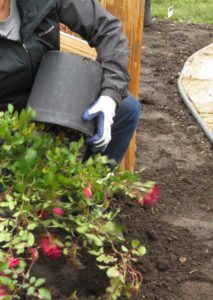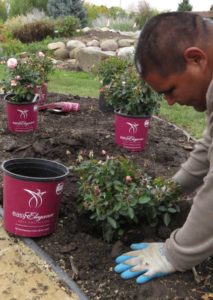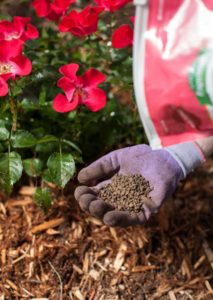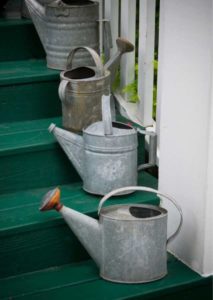From site selection to overwintering, we’ll show you how to get the most out of your Easy Elegance Roses.
Easy Elegance® Roses do best in well-drained soil with at least five to six hours of sunlight every day. Especially in cooler climates with shorter growing seasons,  roses need sun exposure to develop flowers so be sure that you find a sunny spot for your blooming beauties.
roses need sun exposure to develop flowers so be sure that you find a sunny spot for your blooming beauties.
When planning your garden, be sure to keep in mind the full mature size of your roses and leave space for airflow in between each shrub. This helps prevent any potential disease problems and leaves room for growth. Though you want to have airflow, protection from strong wind is always a good call. Don’t let a strong summer storm ruin your beautiful foliage or perfect blooms.
Good soil is the best way to ensure long-term success with your new roses. Easy Elegance® Roses send their roots deep and wide, so you want the best soil to ensure healthy growth. Roses prefer loamy, well-drained soil with a good amount of organic matter. Organic matter provides nutrients, increases nutrient holding capacity, and improves drainage and airspace, all essential elements for good plant development. Sources of organic matter include compost, sphagnum peat moss, decomposed manure and decomposed grass clippings and shredded leaves. If you don’t compost at home, most nurseries carry bagged or bulk compost and other organic materials.
 The best way to get organic matter into the soil is to add compost. To do this, till or loosen the soil to a depth of 6-8 inches. Then spread 2-4 inches of organic matter, fertilizer, and lime or sulfur if needed, over the planting area then re-till or spade the organic material into the soil.
The best way to get organic matter into the soil is to add compost. To do this, till or loosen the soil to a depth of 6-8 inches. Then spread 2-4 inches of organic matter, fertilizer, and lime or sulfur if needed, over the planting area then re-till or spade the organic material into the soil.
If you are only planting one or a few roses, you can simply remove soil from the planting hole and mix the soil you remove from the hole with a good amount of organic matter, fertilizer, and lime or sulfur if needed.
Planting roses is quick and easy! Follow these 10 steps for quick planting:

Easy Elegance® Roses are easy-care shrubs, but like any plant do better with the proper nutrition. This is especially true if you have sandy soil which doesn’t retain nutrients or soil that is low in organic matter. One application of fertilizer per season, as the buds appear in spring, is usually enough. You may apply fertilizer once again late in June, but don’t overdo it because too much fertilizer can harm the roots and prevent bloom production. Both inorganic and organic fertilizers deliver great results.
Roses like moist well-drained soil, especially while they’re just getting started in  your garden. Although shrub roses, once established, are drought-tolerant, plants that get enough water will produce more abundant, superior blooms and flower longer with vivid color and fragrance.
your garden. Although shrub roses, once established, are drought-tolerant, plants that get enough water will produce more abundant, superior blooms and flower longer with vivid color and fragrance.
One significant advantage of easy-care Easy Elegance® roses is they require very little pruning.

More Pruning Tips:
Easy Elegance® roses are specifically bred to stand up to winter cold, so you don’t need to do any of the in-depth winter protection like you do for many other roses! Even for those of you that live in Zones 4 and 5, don’t worry about the old rose cones or tipping method. Follow these easy steps for winter preparation: